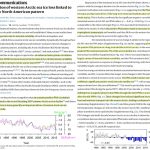
By Kenneth Richard on 18. March 2021
Scientists (Liu et al., 2021) have assessed the Pacific North American (PNA) pattern, “largely a mode of internal variability,” is “an important driver of western Arctic sea variability and trends”. The heat-redistributing PNA pattern recently shifted from a negative (1980s) to positive (1995-) phase. This internal shift “induced significant increases in poleward heat” transport, explaining […]
Posted in Arctic, Sea Ice |
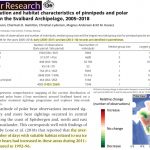
By Kenneth Richard on 22. February 2021
Research on polar bear sightings using a systematic “regional marine mammal sightings programme” during 2005-2018 reveals there were 1,433 polar bears sightings from 2005-2011 compared to 2,569 during 2012-2018 around Svalbard. The perspective that polar bears are endangered by global warming because reduced sea ice limits their seal-hunting opportunities is again contradicted by real-world observations. […]
Posted in Arctic, Sea Ice |
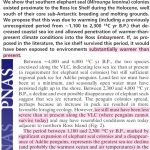
By Kenneth Richard on 11. February 2021
The survivable temperature thresholds for terrestrial animals in both hemispheres affirm recent millennia were much warmer with less sea ice than today. Antarctica hasn’t warmed in the last 70 years (Singh et al., 2020). The Southern Ocean surrounding Antarctica has been cooling and sea ice has been expanding since 1979 (Fan et al., 2014; Qian […]
Posted in Antarctic, Arctic, Cooling/Temperature, Glaciers, Paleo-climatology, Sea Ice |

By Kenneth Richard on 29. January 2021
In 2020, more than 400 scientific papers were published that cast doubt on the position that anthropogenic CO2 emissions function as the climate’s fundamental control knob…or that otherwise serve to question the efficacy of climate models or the related “consensus” positions commonly endorsed by policymakers and mainstream media sources. Over 400 scientific papers published in […]
Posted in Alarmism, Antarctic, Arctic, Climate Sensitivity, Cloud Climate Influence, CO2 and GHG, CO2 Greens the Earth, Cooling/Temperature, Coral Reefs, Glaciers, Hockey Team, Medieval Warm Period, Natural Oceanic Oscillations, Natural Variability, Ocean Acidification, Oceans, Paleo-climatology, Sea Ice, Sea Levels, Solar Sciences, Wind Power |
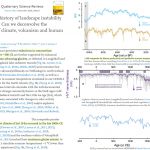
By Kenneth Richard on 14. December 2020
A wealth of new research in glacier and sea ice extent show modern Iceland is 2-4°C colder than all of the last 8000 years except for a slightly colder late 19th century. Even the 1700s were warmer with less ice than today in and around Iceland. A new study (Geirsdóttir et al., 2020) now affirms […]
Posted in Arctic, Cooling/Temperature, Glaciers, Paleo-climatology, Sea Ice |
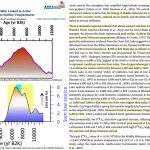
By Kenneth Richard on 12. November 2020
The southwestern US was nearly a desert from about 9000 to 5000 years ago, when Holocene peaks in aridity, surface temperature, and wildfire rates occurred. Arctic sea ice was at its lowest extent of the Holocene during these years. Image Source: Lachniet et al., 2020 A new extensively-referenced study (Lachniet et al., 2020) reviewing many […]
Posted in Drought and Deserts, Paleo-climatology, Sea Ice |
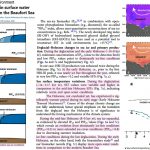
By Kenneth Richard on 29. October 2020
For years scientists have been using biomarker evidence (IP25, PIP25) to reconstruct the Arctic’s sea ice history. The evidence shows modern (20th-21st century) Arctic sea ice is at its greatest extent since the Holocene began. Scientists (Wu et al., 2020) have determined that from about 14,000 to 8,000 years ago, when CO2 lingered near 250 […]
Posted in Arctic, Sea Ice |
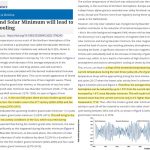
By Kenneth Richard on 27. August 2020
During the last Grand Solar Minimum (17th century), global surface temperatures dipped to the coldest of the last 10,000 years – about 1.4°C colder than today. Dr. Zharkova, an astrophysicist, has determined another imminent drop in solar activity will lead to a 1°C cooling in the coming decades. From 1645 to 1710, the Sun went […]
Posted in Arctic, Cooling/Temperature, Sea Ice, Solar
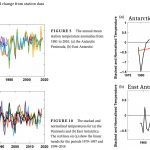
By Kenneth Richard on 24. August 2020
Ecological conditions for 3 temperature- and sea ice-sensitive species show the sub-Arctic North Atlantic has been cooling and gaining ice since 1940. In recent months, several scientific publications have documented a dramatic cooling trend in the subpolar North Atlantic, with temperatures plummeting 2°C since 2008 (Bryden et al., 2020) or -0.78°C per decade since 2004 […]
Posted in Cooling/Temperature, Sea Ice |
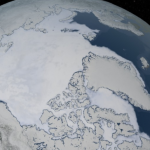
By P Gosselin on 25. July 2020
Image: NASA (public domain) By Die kalte Sonne Do you remember the wild story that cold winters in Central Europe are supposedly a consequence of the Arctic turbo-heating? A great sideshow hypothesis in those years when winters were suddenly colder than expected. A study by Dai & Song 2020 has now brought the idea back to […]
Posted in Arctic, Models, Sea Ice, Stupid Predictions |
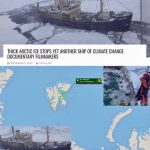
By Kenneth Richard on 28. May 2020
Today, the region north of Svalbard is encrusted with sea ice for all but a few weeks per year and summer sea surface temperatures (SSTs) hover near 0°C. Scientists (Brice et al., 2020) have determined this same region had sea ice-free conditions last about 10 months per year while SSTs reached 4°C just ~4100 years […]
Posted in Arctic, Paleo-climatology, Sea Ice |
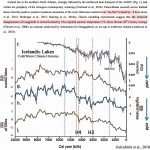
By Kenneth Richard on 21. May 2020
During the Early Holocene, when CO2 levels lingered near 260 ppm, ice core records suggest surface temperatures in Iceland were about 3°C warmer than today. Iceland’s extensive lakes and glaciers topography provides a verifiable history of the region’s paleoclimates. For example, scientists can infer summer temperatures 3°C warmer than today in Iceland to account for […]
Posted in Arctic, Paleo-climatology, Sea Ice |












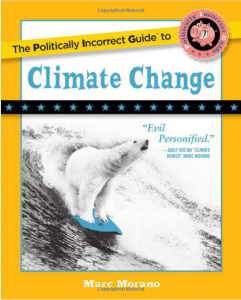
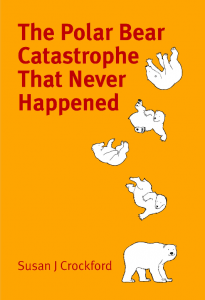
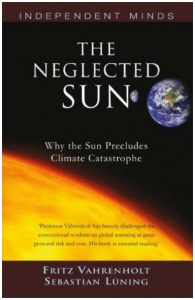
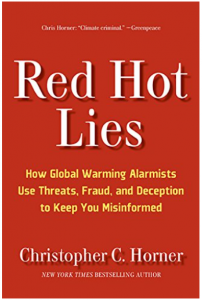

Recent Comments